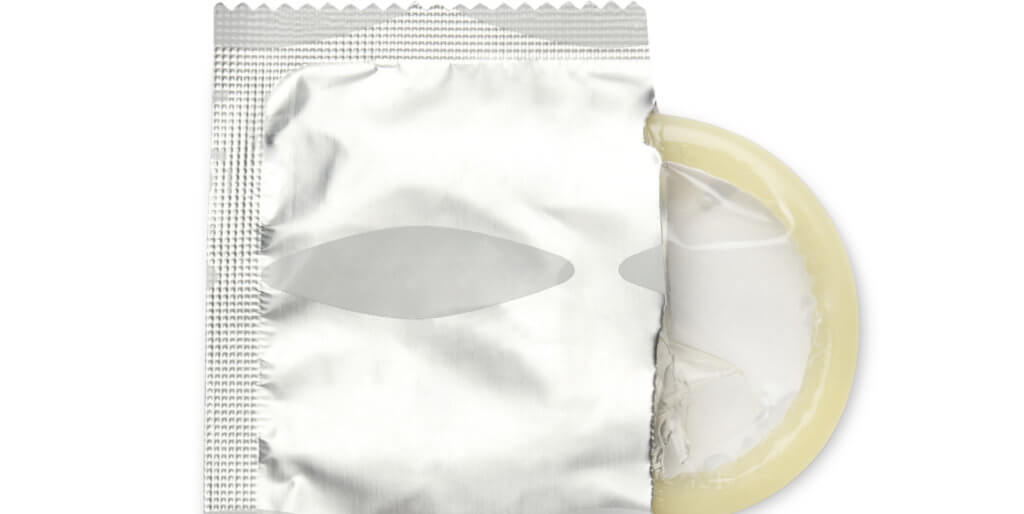
Choosing the right birth control can seem like a daunting task, especially with dozens of types to choose from. Finding the method of birth control that is right for you can be influenced by a number of different factors including the effectiveness of the method, any related costs, how invasive it is, the complexity of the method, and your religious or philosophical beliefs. Here is a brief guide to one type of birth control known as Barrier Methods as well as some of the less effective forms of birth control.
Barrier methods of birth control work by blocking semen from entering the vagina thereby preventing sperm from joining with the egg. The most popular form of barrier method is the male condom. Other forms include female condoms, diaphragms and cervical caps. Barrier methods alone are not a very effective form of long term birth control as they have fairly high typical use failure rates. One of the advantages to using condoms is they can help protect against sexually transmitted diseases, which no other form of birth control does. Barrier methods of birth control work best when used in combination with other forms of birth control.
- Condoms (male) – The most effective and common condoms are made of latex and they are worn on the man's penis during intercourse. They prevent pregnancy by keeping semen inside the condom, preventing it from entering the woman's vagina. In perfect use, 2 out of 100 women who use condoms would become pregnant in the first year of using condoms. However, in typical use, as many as 18 in 100 women using condoms will become pregnant in the first year of use. One of the reasons there is such a high failure rate is that condoms are often not stored properly which can cause the latex to breakdown and become less strong and they can break. One of the advantages to using condoms is they can help protect against sexually transmitted diseases, which no other form of birth control does. Condoms as a form of birth control works best when used in combination with other forms of birth control. Condoms should be used one time and thrown away after use.
- Female Condoms- Female condoms are a pouch that is placed deep inside the vagina and worn during intercourse. It works to prevent pregnancy the same way male condoms work. Female condoms are less effective than male condoms at both preventing pregnancy and protecting against sexually transmitted diseases. In perfect use, 5 in 100 women will become pregnant using female condoms as their only form of birth control and in typical use, 21 in 100 women will become pregnant. Female condoms should be used one time and thrown away after use.
- Diaphragm– A diaphragm is a silicone dome shaped cup that is inserted into the vagina to cover the cervix. Diaphragms are worn during intercourse and must be left in for six hours after intercourse but should not be left in for more than 24 hours. Diaphragms work to prevent pregnancy in two ways. The first is that they keep sperm from entering the uterus and joining with the egg. The second is they are often used with a Spermicide cream or gel that stops sperm from moving. If used perfectly, 6 in 100 women will become pregnant using a diaphragm each year and in typical use, 12 in 100 women will become pregnant. Diaphragms are reusable and will last about 2 years before needing to be replaced.
Some less effective methods of birth control include the cervical cap, the sponge, spermicide and the morning after pill. These methods are not recommended to be used on their own as a source of birth control or you may want to consider alternative methods due to how unreliable these methods are.
- Cervical caps- Cervical caps are similar to diaphragms and work to prevent pregnancy the same way. The reason cervical caps are not recommended is even when they are used perfectly, 14 in 100 women will become pregnant using them. These numbers are only for women who have never given birth. After childbirth, 29 in 100 women will become pregnant using cervical caps which makes it less effective than typical use of the withdrawal method or "pulling out."
- Sponge- The sponge is a one-time use version of the cervical cap and is only slightly more effective. In perfect use, 9 in 100 women become pregnant before childbirth and 20 in 100 become pregnant after having given birth. In typical use those numbers jump to 12 in 100 and 24 in 100.
- Spermicide- Spermicide is good to be used in combination with other forms of birth control, but on its own it is not a very effective method. Spermicide is often found in lubricants and creams that can be used in conjunction with condoms. 18 in 100 women who use Spermicide as their only form of birth control will become pregnant if used perfectly. In typical use that number is 28 out of 100.
-
Morning After pill- The morning after pill is not meant to be used as a primary form of birth control, it is meant as emergency contraception. The morning after pill works by keeping a woman's ovary from releasing an egg for longer than usual. Since conception does not happen right after sex, the morning after pill can work by preventing pregnancy as long as it is taken within 5 days after having sex. However, the morning after pill is only 89% effective when taken within 3 days after sex and 85% effective when taken within five days. The copper IUD is much more effective as emergency contraception, it is 99.9% effective up to five days after sex, but it is generally more expensive than the morning after pill.
